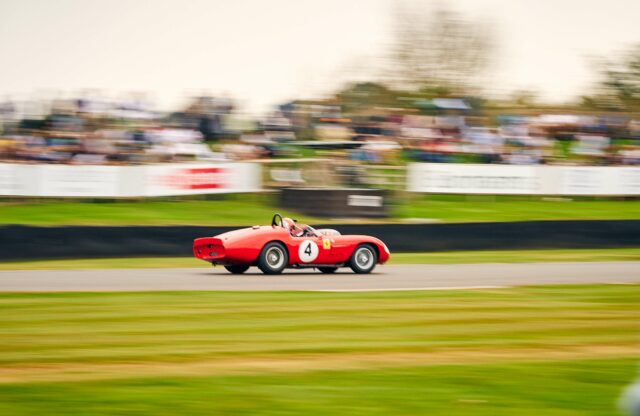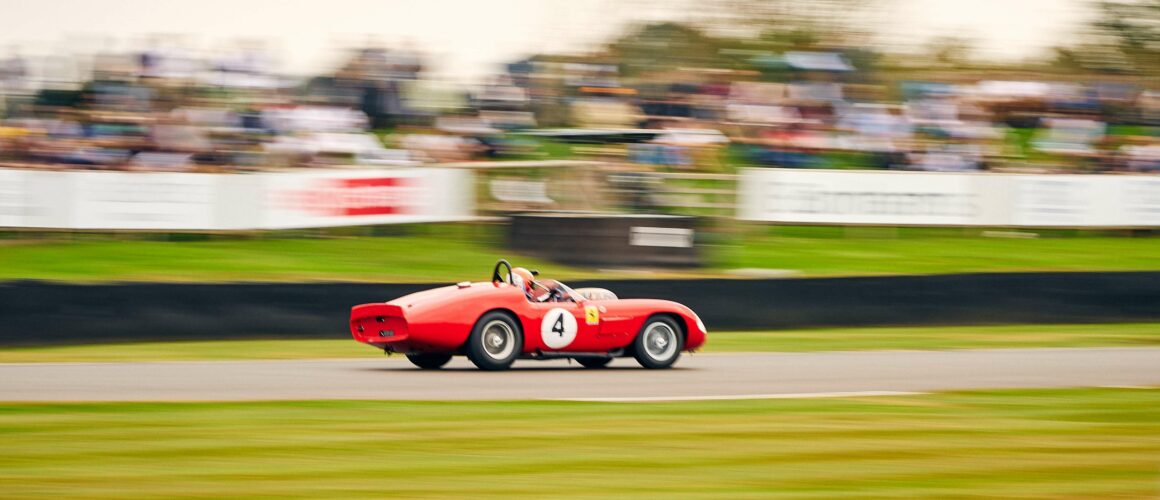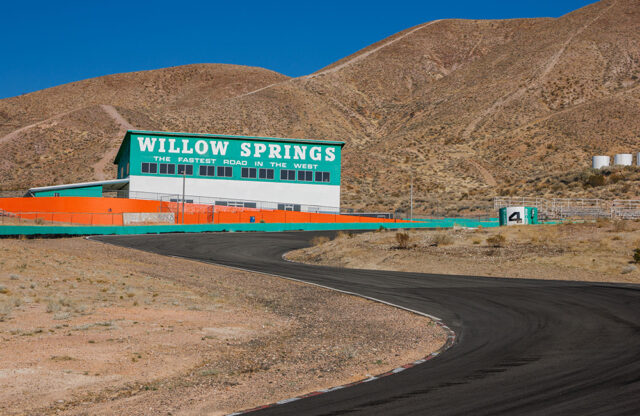There’s a lot to be said for driving blind. Not literally, of course, but relieved of distracting gizmos such as onboard lap-time displays, predictive lap timers, live-segment analysis, even a pitboard (and, God forbid, live ‘coaching’ over the radio from a race engineer analysing your telemetry).
This story first appeared in Magneto issue 21.
As technical as this sport is, sometimes it’s important to simply use your eyes and your backside to see and really feel what the car is doing and how it is responding to your inputs. I was reminded of this while testing for the recent Goodwood Revival in the glorious 1960 Fantuzzi-bodied Ferrari 246S Dino that I have been privileged to race over recent years in the annual Sussex Trophy.
Unusually for a car of its vintage, it needs to be thrashed to extract its full performance potential; late on the brakes, turn in hard ‘on the nose’, provoke the steering to trigger some yaw, then apply a generous bootful of throttle to keep it drifting – and turning – from apex to exit. It’s an aggressive style of driving that doesn’t come naturally to me, and it can be hard on the tyres. The little Dino loves it, however – and, given how awfully it understeers at nine-tenths, it seems preordained by the Maranello elders for ‘attack mode’ only.

Without the distraction of a digital display judging every metre of my performance, I felt entirely connected to the car

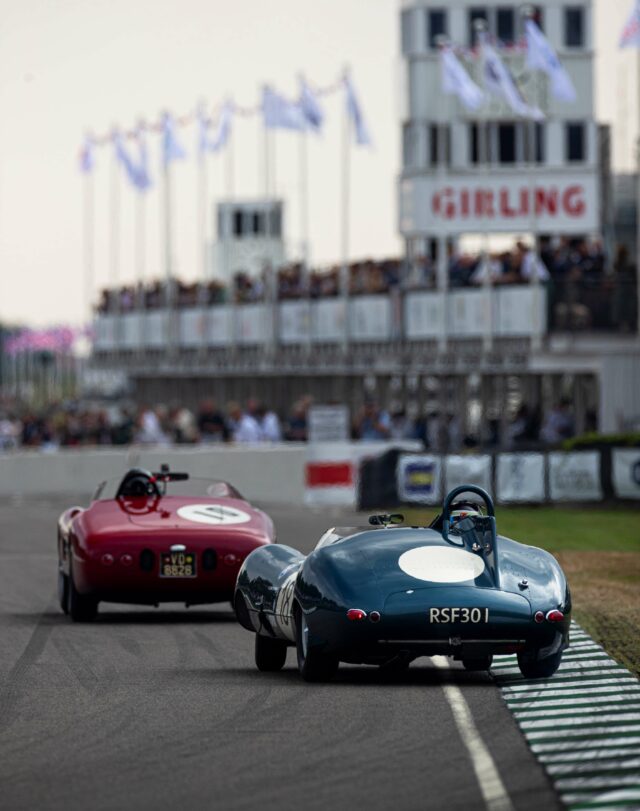
For this reason I’ve relied heavily over the years on Racelogic’s predictive lap-time display unit. Mounted on the dash, it gives a live ‘plus or minus’ indication of how many tenths (or seconds!) you may have won or lost compared with your previous best. This is useful during Revival qualifying, because finding a clear lap can be incredibly difficult and there’s no point taking unnecessary risks with such a special car or cooking the Dunlops to complete laps that are unlikely to improve the grid position.
The predictive lap-time display has also been useful in testing. I can see after just a few corners whether or not a set-up change has helped or hindered, and thus I can decide to terminate or continue the lap accordingly, potentially saving a lot of time. And, given how contrary to my natural driving style the Dino’s preferred technique is, I can satisfy myself that every armful of oversteer ‘really is quicker’.
Given this use case, imagine then my frustration when, only a few days before our final pre-Revival test, my Racelogic unit was pinched from my road car along with my race kit during a smash-and-grab. With no opportunity to replace the device I was, for the first time in some years, going to have to drive ‘blind’. And you know what? It was fabulous.
I didn’t know it at the time, but within a few laps of our first run we were already matching our previous best efforts and, by day’s end, we’d blitzed them to record the fastest times the Ferrari has ever achieved at Goodwood. And because the track-day rules of that particular occasion didn’t even allow pitboards to be hung from the wall, I had to wait until trundling back to the paddock at the end of each run to discover the good news.
Far from making the day less efficient, it was almost doubly so. Without the distraction of a digital display judging every metre of my performance, I felt entirely connected to the car in a way I don’t think I have experienced before. I could feel, instinctively, whether or not set-up changes had improved things and, while still having to maintain that attacking driving style, I noticed some smoothening of sharp edges in my technique… better ‘flow’, if you will.
Now I’m not suggesting this was entirely due to the removal of an onboard lap-time display – perhaps I was just having a good day or the Ferrari was particularly dialled in. But there’s no doubt that the lap times came easily and that I enjoyed the freedom from being so mercilessly judged by that little OLED screen. With my eyes free to remain glued only to the next apex or brake point, I think I felt a little more ‘ahead’ of the car – dare I say less stressed. And as I have long preached to my coaching clients, a more relaxed demeanour behind the wheel – gentle grip, soft wrists, dropped shoulders – can contribute enormously to an improved performance.
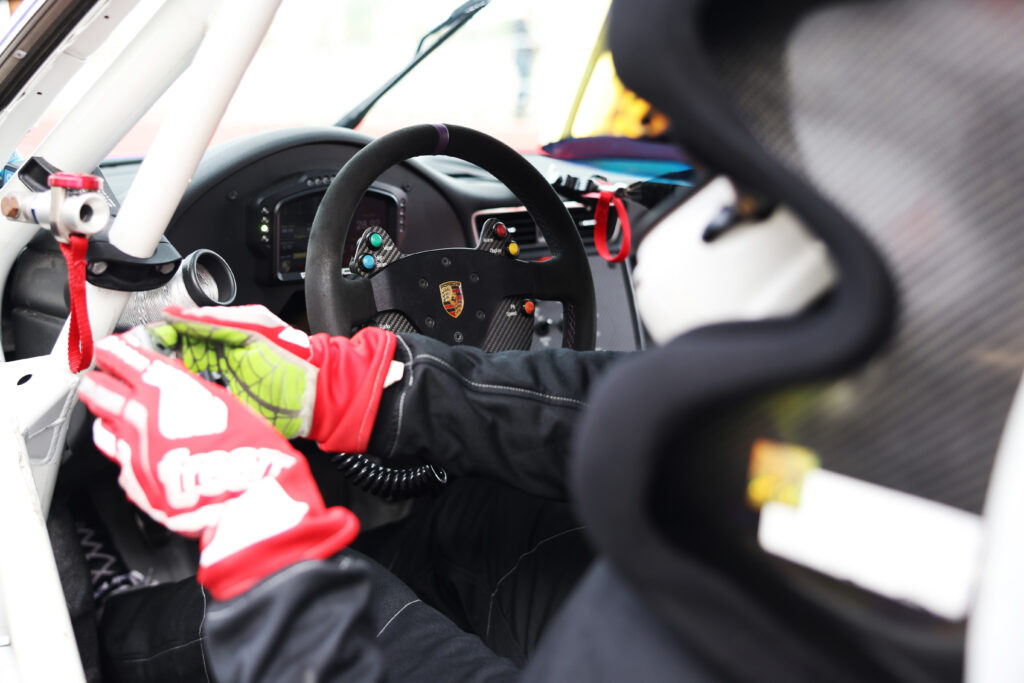
There’s no doubt that these driver ‘aids’ have their place. They can be incredibly useful and, of course, I use them often when coaching. But they do invariably encourage us to ‘try harder’, which very often is the exact opposite of what’s required.
So, if you find yourself butting up against a glass ceiling, unable to improve your lap times and growing frustrated at the ever-increasing deficit being projected from your onboard display, your best set-up change might just come in the form of a small piece of black tape, cut perfectly to the size of its screen.
Sam is a professional racing driver, coach and dealer in significant competition cars. See more at www.samhancock.com.
